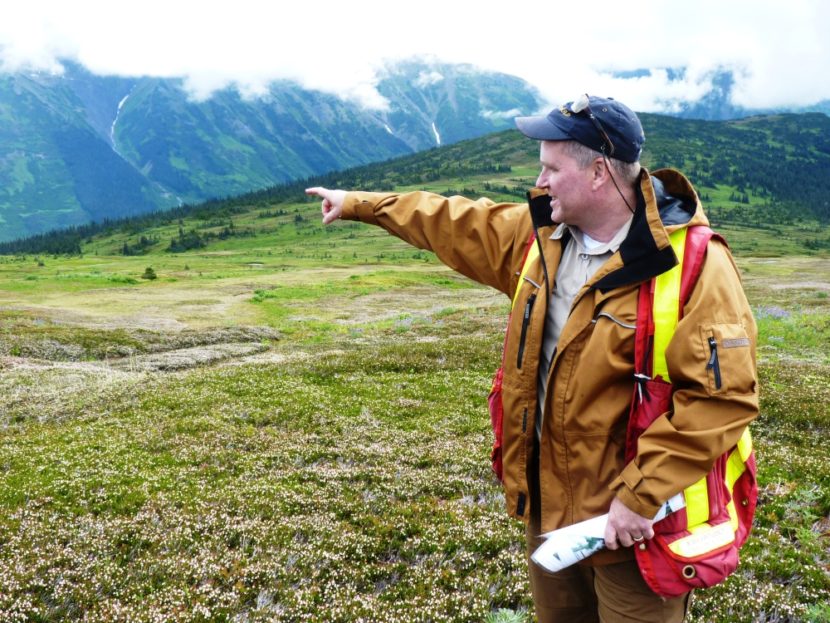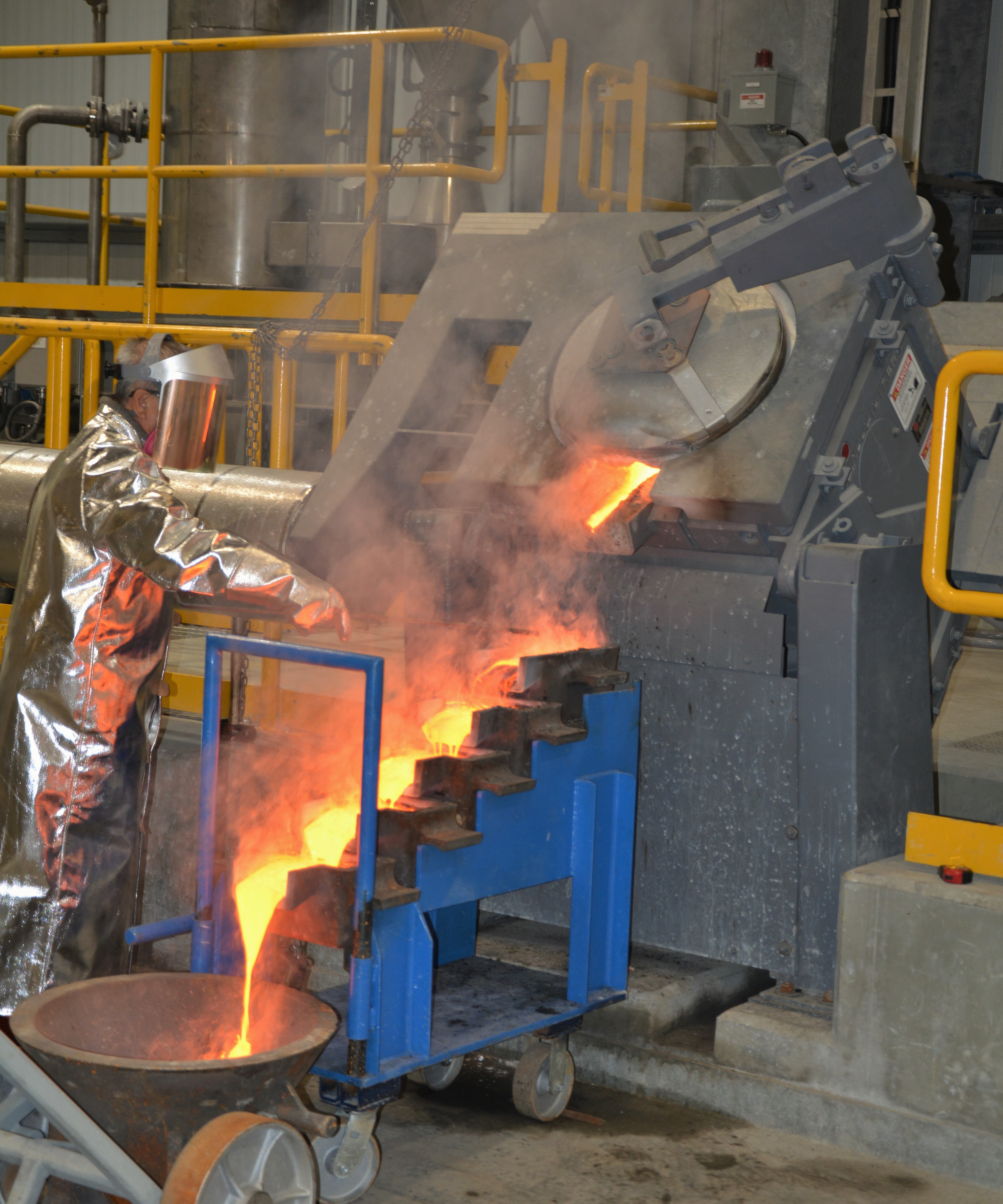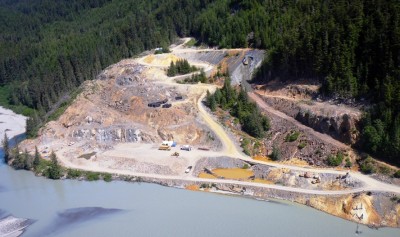
A new gold mine has gone into production near British Columbia’s border with Southeast Alaska, one of several prospects under exploration near creeks or rivers that flow into the region.
The Brucejack Mine had what’s called its “first pour” — or when refined ore is melted down to make a project’s first bar of gold — this summer.
The high-altitude mine is about 25 miles from the Alaska border and about 80 miles east of Wrangell. It’s within the watershed of the Unuk River, which drains into the ocean northeast of Ketchikan.
Officials at Vancouver-based mine owner Pretivm Resources did not return calls by this report’s deadline.

But in an earlier interview, vice president Michelle Romero said the company is building on a previous owner’s work.
“There was existing underground excavation done and we had used that access to get to the heart of the project, which is the Valley of the Kings,” Romero said.
A company news release said its main ore body has proven reserves of 1.6 million ounces, worth about $2 billion in U.S. currency. It projects total reserves of four times that much gold, plus a significant silver deposit.
Brucejack is far less controversial than some other British Columbia mining projects across the border from Southeast Alaska.
Heather Hardcastle is a fisheries-business owner and campaign director for the environmental group Salmon Beyond Borders.
“It is a lot smaller than the other mines in the transboundary region and it is an underground mine,” Hardcastle said. “As far as the disposal of tailings go, we certainly feel better about their plans to put the tailings and the waste back underground.”
Tailings are ground-up rock, often containing hazardous minerals, that are leftover from processing ore. Mine critics say the common practice of mixing them with water and storing them behind dams threatens downstream fisheries.
Hardcastle said her main concern is that it’s part of a larger effort to develop more than a half-dozen projects that would use tailings dams.
The largest of those is Kerr-Sulphurets-Mitchell, which is next to Brucejack.

What’s known as KSM won a key permit from Canada environmental officials this summer.
Brent Murphy is vice president of environmental affairs for Toronto-based developer Seabridge Gold.
“The permit that we got was essentially an amendment to the federal law that allows us to go in and deposit essentially waste material into streams that are frequented by fish,” Murphy said.
Murphy said the permit requires the company to post an appropriate bond and create twice as much fish habitat as it destroys.
This summer is KSM’s 11th for exploratory drilling. Murphy said work continues to better define its high-value ore bodies.
“We have a crew of about 25 people in there, the camp has been open since early May and we’re also continuing with our ongoing environmental monitoring and it’s actually our 10th year of collection of baseline data,” Murphy said.
KSM will store its tailings in a valley that’s part of the watershed of the Nass River, which enters an ocean inlet about 20 miles south of the Alaska border.
Hardcastle, who fishes out of Juneau, said that’s close enough to pose a threat.
“Commercial fishermen from the United States do and are allowed to catch a certain number of Nass fish,” Hardcastle said. “Commercial fishermen from Alaska especially contend that we very much have concerns about what goes on in the headwaters of the Nass.”
The KSM project is supported by the Nisga’a Nation, the tribal government for the Nass River Valley. Both signed an agreement promising environmental protections, jobs and financial support.

Seabridge Gold continues to seek investors for the multi-billion-dollar project.
The company also is exploring ore deposits in a nearby area. The Iskut Project is about 20 miles northwest of the KSM and approximately 10 miles from the Alaska border.
Seabridge acquired the area about a year ago. Murphy said the company has been drilling to find out more about what’s there. The prospect includes a mine that closed in 1990.
“We know there’s gold mineralization at Johnny Mountain,” Murphy said. “We started there last year, trying to understand the geology, and we’re moving a little bit further afield this year.”
Part of the purchase is a multi-year cleanup plan, including removal of asbestos tiles, mercury lamps and a fuel-tank farm.
One transboundary mine that’s going nowhere is the Tulsequah Chief, on a Taku River tributary about 40 miles northeast of Juneau. It closed more than a half-century ago and two attempts to reopen it failed.
The company holding its assets filed documents earlier this summer suggesting it had found a new investor. But mine critic Chris Zimmer, of the group Rivers without Borders, said officials have told him the company is no longer interested.
“Now, we’re kind of back here in a little bit of limbo. There’s no company up there, the mine continues to leak acid mine drainage and now we’re kind of unsure what the B.C. government is going to do next,” Zimmer said.
The province’s previous top mine official committed to cleaning up pollution from the Tulsequah Chief after a visit two years ago.
But a new mines minister just took over and isn’t ready to discuss the situation.
Ed Schoenfeld is Regional News Director for CoastAlaska, a consortium of public radio stations in Ketchikan, Juneau, Sitka, Petersburg and Wrangell.
He primarily covers Southeast Alaska regional topics, including the state ferry system, transboundary mining, the Tongass National Forest and Native corporations and issues.
He has also worked as a manager, editor and reporter for the Juneau Empire newspaper and Juneau public radio station KTOO. He’s also reported for commercial station KINY in Juneau and public stations KPFA in Berkley, WYSO in Yellow Springs, Ohio, and WUHY in Philadelphia. He’s lived in Alaska since 1979 and is a contributor to Alaska Public Radio Network newscasts, the Northwest (Public Radio) News Network and National Native News. He is a board member of the Alaska Press Club. Originally from Cleveland, Ohio, he lives in Douglas.




